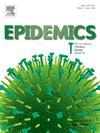严重传染病传播的综合建模和相应的废水动力学
IF 2.4
3区 医学
Q2 INFECTIOUS DISEASES
引用次数: 0
摘要
2019冠状病毒病大流行强调了对准确疾病建模的迫切需要,以便为公共卫生干预提供信息。传统上对确诊感染数据的依赖常常受到报告延迟和报告不足的阻碍,而对整个队列进行抗原或抗体检测可能既昂贵又不切实际。基于废水的监测通过检测粪便排出的病毒浓度提供了一种有希望的替代方案,可能提供对真实感染流行率的更准确估计。然而,在优化采样协议、位置和标准化策略方面仍然存在挑战,特别是在考虑降水等环境因素方面。我们提出了一个综合模型,通过病毒脱落曲线将详细的感染动力学与废水处理联系起来,模拟了严重传染病的传播。通过综合模拟,我们研究了病毒特征、降水事件、测量方案和标准化策略如何影响感染动态和废水测量之间的关系。我们的研究结果揭示了疾病流行与相应的废水浓度之间的复杂关系,主要变异性来源包括上游采样地点、连续降雨和快速病毒衰变。值得注意的是,我们发现当雨水渗入下水道系统时,流量归一化是不可靠的。尽管存在这些挑战,但我们的研究表明,基于废水的监测数据可以作为疾病流行的主要指标,在疫情发生之前预测疫情峰值。因此,所提出的综合模型可用于优化基于废水的监测,提高其对公共卫生监测的效用。本文章由计算机程序翻译,如有差异,请以英文原文为准。

Integrative modeling of the spread of serious infectious diseases and corresponding wastewater dynamics
The COVID-19 pandemic has emphasized the critical need for accurate disease modeling to inform public health interventions. Traditional reliance on confirmed infection data is often hindered by reporting delays and under-reporting, while antigen or antibody testing of a full cohort can be costly and impractical. Wastewater-based surveillance offers a promising alternative by detecting viral concentrations from fecal shedding, potentially providing a more accurate estimate of true infection prevalence. However, challenges remain in optimizing sampling protocols, locations, and normalization strategies, particularly in accounting for environmental factors like precipitation.
We present an integrative model that simulates the spread of serious infectious diseases by linking detailed infection dynamics with wastewater processes through viral shedding curves. Through comprehensive simulations, we examine how virus characteristics, precipitation events, measurement protocols, and normalization strategies affect the relationship between infection dynamics and wastewater measurements. Our findings reveal a complex relationship between disease prevalence and corresponding wastewater concentrations, with key variability sources including upstream sampling locations, continuous rainfall, and rapid viral decay. Notably, we find that flow rate normalization can be unreliable when rainwater infiltrates sewer systems. Despite these challenges, our study demonstrates that wastewater-based surveillance data can serve as a leading indicator of disease prevalence, predicting outbreak peaks before they occur. The proposed integrative model can thus be used to optimize wastewater-based surveillance, enhancing its utility for public health monitoring.
求助全文
通过发布文献求助,成功后即可免费获取论文全文。
去求助
来源期刊

Epidemics
INFECTIOUS DISEASES-
CiteScore
6.00
自引率
7.90%
发文量
92
审稿时长
140 days
期刊介绍:
Epidemics publishes papers on infectious disease dynamics in the broadest sense. Its scope covers both within-host dynamics of infectious agents and dynamics at the population level, particularly the interaction between the two. Areas of emphasis include: spread, transmission, persistence, implications and population dynamics of infectious diseases; population and public health as well as policy aspects of control and prevention; dynamics at the individual level; interaction with the environment, ecology and evolution of infectious diseases, as well as population genetics of infectious agents.
 求助内容:
求助内容: 应助结果提醒方式:
应助结果提醒方式:


